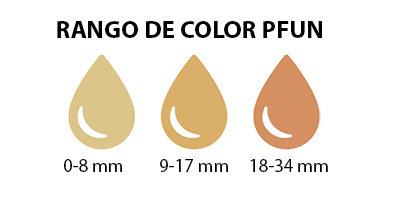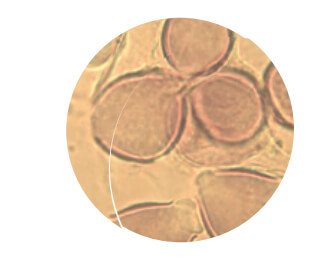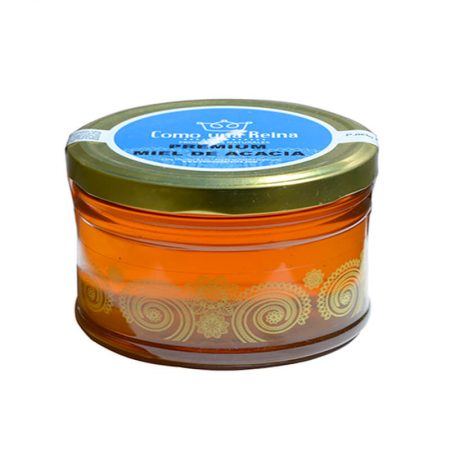The Acacia honey, is a natural product that is elaborated by bees from the black locust tree blossoms, (also labelled “false acacia” tree). A worldwide top selling honey for its pleasant and mild taste !
Selection of fantastic acacia honeys from local beekeepers from Europe.
Index:
|
Summary: Acacia honey is a unique honey with a medium sweet and pleasant aroma of vainilla and almond. Moreover, it has a beautiful light color and takes a long time to crystallise. It also stands out for its beneficial properties and it is the least allergenic of all other honey. In addition, this honey is available for sell in our shop in Las Rozas de Madrid.
Other interesting articles: Raw unpasteurised honey.
1. Our raw Acacia honey
Firstly, keep reading to find out about acacia honey:
a) Color
This honey has a very light ambar color while runny, and white when set.

Photo 1: Colour range of acacia honey.
b) Aroma
In mouth, a very sweet with neutral flavor is appreciated. Also, you can taste pleasent aromas of vainilla and almond, that are very characteristic of this honey.
c) Acacia tree
The tree of Acacia, the “robinia pseudoancia” in its scientific name, reaches between 15 and 25 meters high and is found in many countries. In Europe we find large plantations in Romania, Bulgaria, Hungary and Ukraine.
Video 1: acacia flowers
d) Flowering and harvesting
Acacia flowers all year round, but hatches most in May and June. Therefore, it is one of the honeys that are harvested earlier.
e) Pollen
Subsequently, the majority pollen you will find in this honey comes from acacia, Robinia pseudoacacia in its scientific name. Moreover. you will also find less pollen from other meadow fabaceae, asteraceae and some lamiaceae.

Photo 2: Acacia pollen under the microscope
f) Crystallisation
Acacia honey has a low sucrose content and high fructose content. Due to its high fructose content to glucose ratio, its crystallization is slow. Consequently, it remains liquid for years but its velocity of crystalization depends on the temperature.
g) Useful life
Useful life refers to the time when the honey may lose some of its properties. Therefore, after two years it could exceed 40 mg/Kg of MHF.
h) Destination population
We do no recomend to feed this honey to children under 2 years.
2. Benefits and properties
Some research say that regular consumption of raw honey has many health benefits. Moreover, we summarize these properties, that we got from popular wisdom, the knowledge of beekeepers and scientific articles.
In this case, the properties of acacia honey are obtained from a scientific article written in 2016 in the journal Frontiers of Bioscience’. This article by a Nigerian university gives the honey the following properties:
- Antioxidant and regulator of the immune system: Due its flavonoids and phenolic that act as antioxidants, this honey helps to protect the cells from damage done by free radicals.
- Helps reduce cancer cells
- It improves memory: they also discovered an improvement in the ability to memorize, in the people who habitually consumed this honey, as well as to reduce the risks of suffering Alzheimer’s disease.
- More properties for other less common diseases.
- A high glycemic index ranking. For this reason, this homey may help regulate blood sugar.
In conclusion, acacia honey is a fantasti sweeten for so many different dishes, and its consumption helps to imrpove our health.
3. Kitchen uses
Honey that cristallizes very slowly and for this reason this honey is very appreciated by children. It is easy to srpad on toasts and biscuits. Furthermore, famous chefs resommend this honey to make dressings in salads with goat cheese and smoked.
4. Indications
Honey of acacia takes a long time to crystallize, so you will almost always find it liquid even if it is not pasteurized. When it crystallizes, it does so with a very fine grain size.
5. Origin
In Spain there are no important plantations to obtain honey from Acacia, so everything comes from east Europe. However, we obtain this honey from the following beekeepers:
Apicultor |
Ubicación |
Características |
| Como Una Reina | Import | No organic |
| Sala Higón | Import | No organic |
| Antonio Simón | Import | Organic |
Tabla 1: Our beekeepers
In short, our importers are serious people who only import high-quality honey. They work with well-known wholesalers, and the honey has been analyzed before it is imported. Consequently, we offer for sale onlye raw honey with no adultaration and no added sugars.
a) Acacia honey from Romania
The large plantations of acacia in Europe come mainly from Romania. But in other European countries there are also Croatia and Poland.
Also, this honey can be easily found in Lidl and Mercadona. However, the acacia honey that we bring, unlike the latter, is of higher quality. However, large supermarkets usually offerprocessed and pasteurized honey.
6. Find out more:
In addition, we show you a chemical analysis of Antonio Simon’s ecologic acacia honey carried out in 2019. we try to update all this information.
a) Composition
Limit parameters that can have the organic acacia honey of Antonio Simón
Chemical parameters |
||
| Colour (mm Pfund) Maximum 35 | Humidity (%). Maximum 18 | Fructose + glucose: Minimum 60 |
| Sucrose: Maximum 10 | Electrical conductivity (mS/cm): minimum 0.3 | Free acidity (meq/kg): Maximum 50 |
| HMF (mg/Kg = ppm): Maximum 40 | Diastasas (Schade Units): Minimum: 8 | Special parameters (index F/G): Minimum 1.5 |
Tabla 2: características químicas de la miel de Antonio Simón




